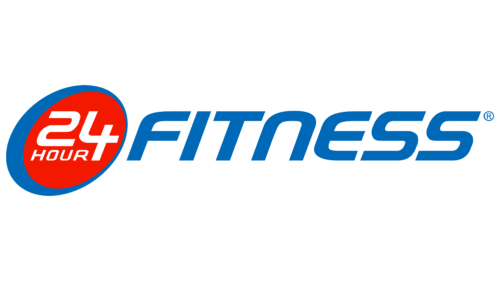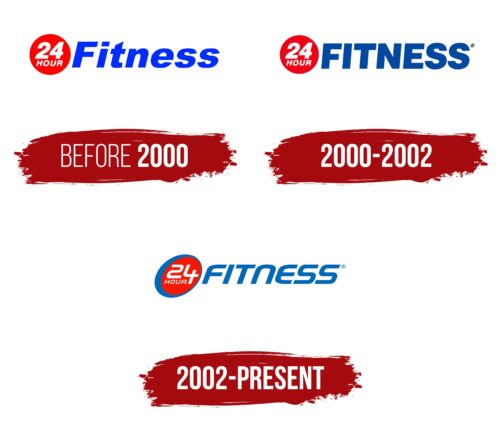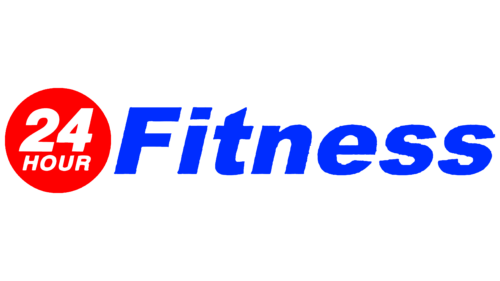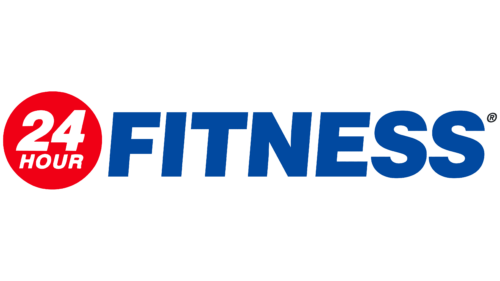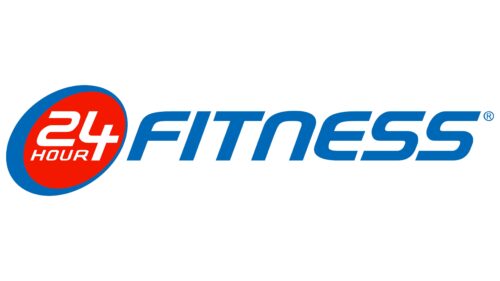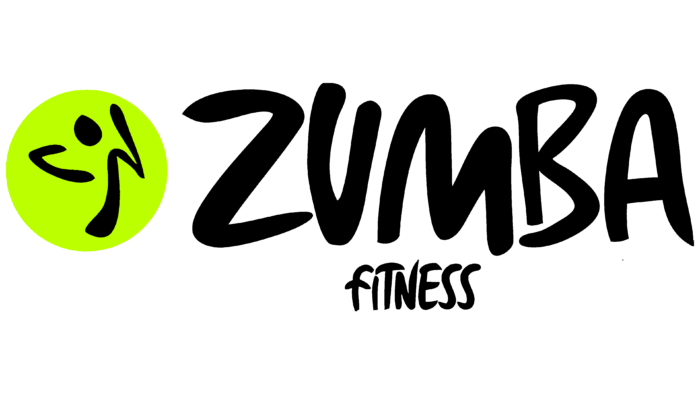The 24-Hour Fitness logo attracts attention with its vibrant colors and originality while remaining stylish and concise. It accurately conveys the brand’s theme, reflecting dynamism in the text and the symbol. Although the design lacks complex or excessive elements, the identity retains individuality and looks presentable. The history of the fitness club chain and its key milestones are reflected in the logos from different periods. However, the latest version has lasted the longest and has become the most successful and expressive.
The central element of the logo is the word “fitness,” which takes the main position and is placed to the right of the emblem. The emblem is an ellipse with a contour that seamlessly incorporates the number “24,” which is part of the name. This graphic solution creates a cohesive image and clarifies the company’s connection to sports activities. The logo almost embodies an ideal athletic body, highlighting the success and professionalism of the company, which managed 410 clubs across America until 2020.
The logo’s aesthetics express simplicity and unity while reflecting the brand’s confidence and stability in the fitness services market.
24 Hour Fitness: Brand overview
The history of 24 Hour Fitness began in 1983 when Mark Mastrov opened his first gym, 24 Hour Nautilus, in San Leandro, California. Mastrov, a former professional tennis player, saw an opportunity to create a 24-hour fitness center that could serve customers around the clock—an innovative idea at the time.
The concept of a 24-hour gym quickly gained popularity with residents. People appreciated the ability to work out whenever it suited them, regardless of their work schedules. As a result, 24 Hour Nautilus expanded rapidly, opening new locations throughout the San Francisco Bay Area.
In 1994, the company rebranded itself as 24 Hour Fitness to better reflect its core concept and offer a wider range of fitness equipment. This change coincided with a period of rapid growth for the company.
By the mid-1990s, the business began expanding beyond California. The company acquired existing fitness franchises and opened new clubs in other states. One of its most important acquisitions came in 1994, when it purchased the Family Fitness Centers chain, greatly increasing its market share.
A key moment in the company’s history occurred in 1996 when it partnered with basketball legend Magic Johnson to open several clubs under the Magic Johnson Sports Clubs brand. This partnership allowed the company to reach new markets and increase its brand recognition.
In the late 1990s, the business continued its aggressive expansion strategy. It acquired several regional fitness chains, including Q Sports Clubs, LivingWell Lady Fitness, and Ray Wilson’s Family Fitness, making it one of the largest fitness chains in the U.S.
2000, the company entered the international market by opening clubs in Asia, specifically in Singapore and Hong Kong. This marked the company’s goal of becoming a major player in the global fitness industry.
The company’s ownership structure changed in 2004 when private equity firm Forstmann Little & Co. purchased a majority stake in the fitness chain for $1.6 billion. This acquisition gave the company more resources to support its growth and development.
In 2006, it became the official fitness center of the U.S. Olympic team. As part of this partnership, the company sponsored athletes and provided Olympic-quality training facilities.
Over the next few years, the brand continued expanding its market share in the U.S. by opening new clubs and renovating existing ones. The company also invested in technology, offering its members more online services and fitness apps.
2014, another ownership change occurred when Forstmann Little & Co. sold the fitness chain to AEA investors. This sale enabled new investments in the growth and revitalization of its clubs.
In 2016, the company launched its digital transformation initiative. It introduced new technologies in its facilities, such as online group training sessions and personalized fitness apps for its members.
In 2018, the brand introduced its “Super-Sport” clubs, which featured expanded amenities like basketball courts, spas, and swimming pools.
Throughout 2019, the business continued upgrading its clubs and expanding its services. It introduced new personal training and group fitness programs to meet the evolving needs of its members.
In 2020 and 2021, the fitness chain, like the entire industry, faced major challenges. Many of the company’s clubs were temporarily closed due to the global situation. During this time, it expanded its online services, offering digital fitness programs and virtual training sessions.
In 2022, the business focused on restructuring and adapting its model. It continued upgrading its clubs, implementing new hygiene and safety measures, and expanding its online training programs and mobile app.
As of 2023, the fitness chain remains one of the largest in the U.S., with hundreds of locations nationwide. The company continues to adapt to its customers’ changing needs by combining innovative digital solutions with traditional fitness services.
Over the past forty years, the business has grown from a single club in California to a nationwide network of fitness centers. Despite internal changes and industry shifts, it has remained committed to offering high-quality, affordable fitness to many people.
Meaning and History
What is 24 Hour Fitness?
This national network of fitness centers provides 24/7 access to workout enthusiasts across the United States. The gyms serve a wide range of clients, including both early birds and night owls. The centers are equipped with various machines, free weights, and functional training areas, and they offer group classes such as yoga and high-intensity interval training. Many locations offer additional services, including saunas, basketball courts, and pools. The company emphasizes its commitment to accessibility through various membership packages catering to different budgets and client goals.
Before 2000
The origin of the 24-Hour Nautilus business, later known as 24-Hour Fitness, dates back to 1983. Its founder, Mark Mastrov, managed to create a unique project that rapidly developed and gained popularity. In the early stages, the company had a different name, but over time, it transformed into a well-known fitness club chain under the name “24 Hour Fitness.” During this time, their signature logo appeared, which, despite its simplicity, was quite bright and memorable, using only three primary colors.
The logo’s creators chose a white background, which provided the best readability for the fonts and highlighted all the elements. The combination of white with red and blue gave the logo an appealing and clean look, creating a contrast that drew attention.
The identity included three primary color elements: a red circle, numbers, and text. The circle, located on the left along the central line of the logo, became a key part of the design. Inside the circle, in white, matching the background, the number “24” was inscribed. It occupied a significant space but remained proportional to the circle, creating harmony. To the right of the circle was the word “fitness.” The word’s first letter was capitalized, but it did not exceed the circle’s boundaries in size. The other letters were smaller but stood out due to the bold font, ensuring readability and visibility.
The logo, combining simplicity and expressiveness, embodied the chain’s energy and dynamism, creating a bright and recognizable image that strengthened 24 Hour Fitness’s reputation as a leader in the fitness industry.
2000 – 2002
In 2002, only a few innovations were noticeable in the logo, but they proved significant for its perception. The main elements were preserved but underwent a partial transformation. The circle was reduced in size while maintaining its bright red color. The bold numbers lost their previous three-dimensional effect, yet their visibility remained strong. The text stayed in its usual place but adopted a more refined and restrained style. The color gradient of the font, transitioning from light to darker shades, added elegance and originality to the logo. The letters now appeared uniform in shape and size, without capital symbols. Serifs and roundings were also removed, giving the logo a crisp and formal look.
Each letter, with clean lines, appeared perfectly drawn, symbolizing the fitness club chain’s reliability and impeccable reputation. The 2002 logo can be characterized as powerful and confident—it conveyed strength and determination, reminding us of the challenging journey toward physical perfection.
2002 – today
The 24-Hour Fitness logo attracted the audience’s attention with its original design, which managed to retain traditional identity elements while offering an unusual format for its presentation. It combines dynamism and simplicity, perfectly reflecting the brand’s philosophy—access to fitness services 24 hours a day, without interruptions or unnecessary barriers. The central element of the emblem is a circle with a red fill, inside of which is the white number “24” and the word “HOUR.” The red symbolizes energy, activity, and passion, while the white numbers and letters stand out against the background, making them easy to read and remember.
The circle’s outline is blue, seamlessly transitioning into the word “FITNESS,” written in the same blue font. Blue is always associated with calmness, stability, and trust, emphasizing the company’s reliability and serious approach to service quality.
The font of the word “FITNESS” is upright and italic, with a slight tilt to the right, creating a sense of movement and speed. This element highlights the dynamic nature of the fitness center, which is always in motion and working for its clients. The lines of the letters are smooth and slightly rounded, resembling waves, giving the logo a modern and energetic look.
Interestingly, the numbers “24” are designed in a geometric, angular style, emphasizing clarity and structure. This can be seen as a symbol of consistency and reliability—the fitness center operates around the clock without breaks.
The logo combines energy, stability, and accessibility—qualities that have made the brand popular among people striving for a healthy lifestyle.
